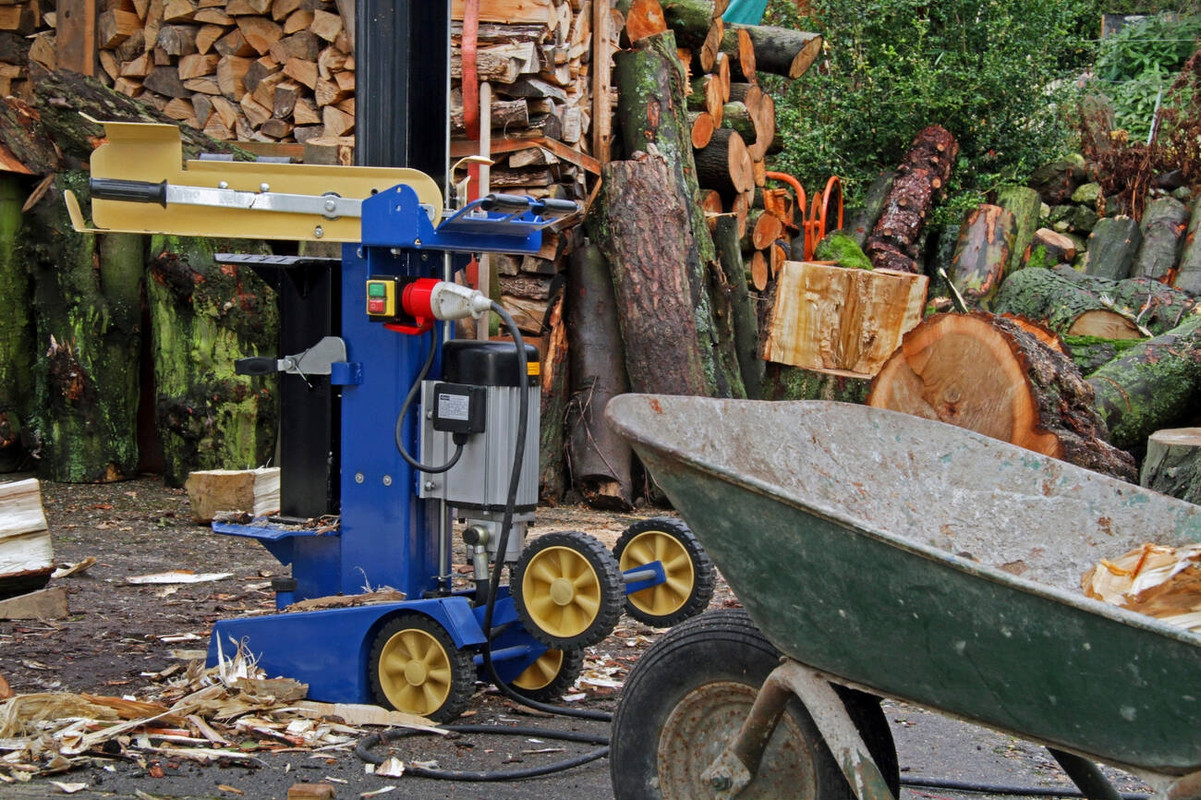There's a particular sense of satisfaction that comes from working with your hands, overseeing a project from conception to completion with your distinctive touch. This deep contentment is often the driving force behind every DIY enthusiast but will quickly dissipate if you find yourself wrestling with the wrong tools. Having the right tools is like assembling a tactical team – each with its unique role, working together seamlessly to achieve a shared goal. For home improvement projects involving woody material, no tool plays a better supportive role than a log splitter.
I remember when I first embattled with an unruly log that refused to fit into my fireplace. The axe in my toolbox wasn't much of a help, and the tedious process nearly made me abandon the idea of a warm, inviting fire. That was the moment I realized the need for a dedicated tool, an enduring ally capable of taming stubborn logs – a log splitter.

The Importance of a Log Splitter in Home Projects
A log splitter is like your personal Hercules, bearing the load of splitting logs so that you do not have to sweat on it. For any project involving firewood or timber, a log splitter is not just an additional tool, but a necessity. It allows you to split logs faster, more efficiently, and with greater accuracy than traditional methods, saving you time and effort that can be better spent on other aspects of your home project. Besides, we all know a neat stack of uniformly split firewood is a delightful sight.
The substantial time and effort a log splitter spares are not the only advantages. With its power and precision, it yields far superior results than manually hacking away with an axe or a handsaw, significantly enhancing the quality of output. It reduces wastage, promotes efficient utilization of material, and provides a safer way to process large volumes of wood.
Understanding the Different Types of Log Splitters
As with any tool, best log splitters come in various forms –manual, electric, and gas. Picking the right one for you depends heavily on your specific needs, workload, and workspace. Manual log splitters require physical effort to operate but are excellent for light-duty tasks, small quantities, and are quieter and more cost-effective.
Electric log splitters are a step up, providing more power and requiring less effort than their manual counterparts. They're ideal if you have regular access to an electrical outlet and cater excellently to medium-duty tasks – think a load of firewood for the winter. Finally, gas log splitters stand as the giants of the bunch, breezing through even the most substantial logs without breaking a sweat. Detached from the need for an electrical outlet, these machines are perfect for heavy-duty tasks but are quite bulkier and noisier.
Factors to Consider When Choosing a Log Splitter
When deciding on the perfect log splitter, a blend of practicality and functionality is vital – there's no point in owning a colossal gas log splitter if you're dealing with small logs for occasional use. The power required should meet your project's size while matching the logs' hardness and size. The splitter's physical size and mobility are essential factors as well, especially if you need to move it around.
Price is undoubtedly an important consideration – it's crucial to balance cost with functionality, durability, and long-term value. Consider the reputation of the brand, the quality of materials, and the robustness of construction. Safety features too are a paramount element, given the inherently hazardous nature of log splitting tasks.

Top Five Log Splitters in the Market:
A comprehensive guide wouldn't be finished without suggesting potential options. Here are five of the best log splitter, covering manual, electric, and gas variants. I picked these out based on performance, value for money, user reviews, and personal experience.
Maintenance and Safety Tips for Using Log Splitters:
An investment in a log splitter necessitates proper care and regular maintenance to preserve its lifespan. Lubricating the moving parts, changing the hydraulic fluid, examining for leaks, and replacing worn-out components are some of the tasks to be carried out regularly. Adhering to safety guidelines such as proper footing and hand positioning, wearing safety equipment, and avoiding overloading are crucial to prevent accidents.
Expert Inputs
Consensus among experts is that identifying one's specific needs, in terms of power required, frequency, and volume of use, and matching it with the right type and size of log splitter, is the secret to choosing the right tool. Efficient use involves grasping basic operation principles, regular maintenance, and always observing safety protocols.
Conclusion
The quest for the best log splitter is a journey of identifying your specific needs and finding the ideal tool that fits these needs along with your budget. Remember, it's not just about saving time or effort but also about having the freedom to focus more on the creative aspects of your home project.

No comments:
Post a Comment